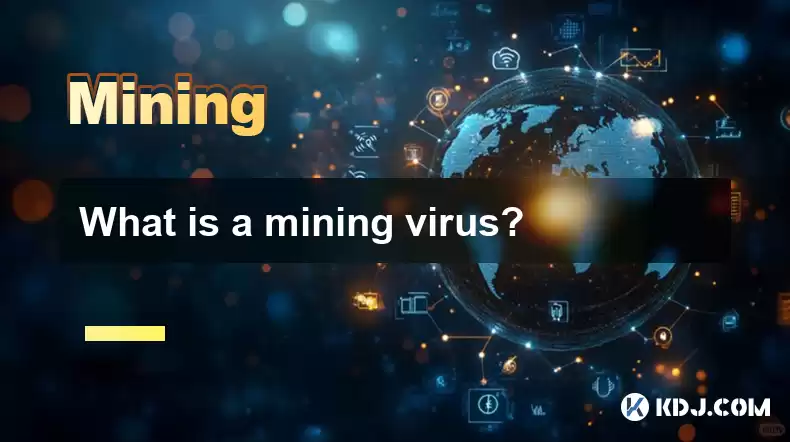-
 Bitcoin
Bitcoin $116400
-0.36% -
 Ethereum
Ethereum $4033
3.40% -
 XRP
XRP $3.302
-1.26% -
 Tether USDt
Tether USDt $1.000
-0.02% -
 BNB
BNB $796.1
1.67% -
 Solana
Solana $177.8
1.89% -
 USDC
USDC $0.9999
0.00% -
 Dogecoin
Dogecoin $0.2314
4.09% -
 TRON
TRON $0.3381
0.14% -
 Cardano
Cardano $0.7989
1.22% -
 Stellar
Stellar $0.4496
-1.84% -
 Chainlink
Chainlink $20.42
9.42% -
 Hyperliquid
Hyperliquid $41.17
0.88% -
 Sui
Sui $3.914
3.77% -
 Bitcoin Cash
Bitcoin Cash $584.7
1.52% -
 Hedera
Hedera $0.2632
-0.54% -
 Avalanche
Avalanche $24.09
3.40% -
 Ethena USDe
Ethena USDe $1.001
-0.02% -
 Litecoin
Litecoin $123.2
1.33% -
 Toncoin
Toncoin $3.318
-0.04% -
 UNUS SED LEO
UNUS SED LEO $8.984
-0.05% -
 Shiba Inu
Shiba Inu $0.00001323
2.85% -
 Uniswap
Uniswap $10.90
4.41% -
 Polkadot
Polkadot $3.999
3.34% -
 Dai
Dai $1.000
0.01% -
 Cronos
Cronos $0.1630
9.64% -
 Bitget Token
Bitget Token $4.484
0.82% -
 Monero
Monero $272.4
2.44% -
 Pepe
Pepe $0.00001173
6.03% -
 Aave
Aave $290.8
2.88%
What is a mining virus?
Mining viruses, malware that exploits computing resources for cryptocurrency mining, can inflict severe performance issues, overheating, and rapid battery drainage on infected systems.
Feb 20, 2025 at 09:18 am

Key Points
- Definition of a mining virus
- Common methods of infection
- Impact of mining viruses on systems
- Prevention and detection techniques
- Removal and recovery procedures
What is a Mining Virus?
A mining virus is a type of malware designed to exploit computing resources for cryptocurrency mining. These viruses typically surreptitiously install on computers and execute in the background, utilizing the host machine's processing power to generate cryptocurrencies such as Bitcoin or Ethereum without the user's knowledge or consent.
Miners employ advanced algorithms that require extensive computational power, making them a lucrative target for cybercriminals seeking to monetize their activities. Mining viruses provide an avenue to covertly harness computing resources without the burden of investing in hardware and electricity costs associated with legitimate mining operations.
Common Methods of Infection
Mining viruses employ a range of techniques to gain access to systems. The most prevalent methods include:
Phishing Attacks:
- Fraudulent emails or text messages trick users into clicking on malicious links or downloading infected attachments that install the mining virus.
- These attacks often leverage legitimate-looking websites or mimic official communications, making them difficult to identify.
Software Bundling:
- Mining viruses can be bundled with free software or legitimate applications. When downloading and installing these programs, unsuspecting users inadvertently grant access to the virus.
- Bundling enables malware to bypass traditional security measures and infect devices without requiring user interaction.
Exploit Kits:
- Exploits leverage vulnerabilities in outdated software or operating systems. Once executed, they grant the attacker full control over the compromised system.
- Exploit kits can be distributed through phishing emails, malicious advertisements, or compromised websites.
Impact of Mining Viruses on Systems
Mining viruses consume significant computing resources to generate cryptocurrencies. This can lead to severe performance issues and system impairments, including:
Sluggish Performance:
- The virus's intensive use of CPU and memory resources slows down the infected device, making it unresponsive and difficult to operate.
- Basic tasks, such as opening documents or browsing the internet, can become laborious.
Overheating:
- The sustained computational demand of mining can cause the system to overheat.
- If left unchecked, overheating can damage hardware components, leading to costly repairs or even permanent device failure.
Battery Drainage:
- Mining viruses running on portable devices, such as laptops, rapidly drain the battery.
- This significantly reduces the device's usability and portability.
Prevention and Detection Techniques
Implementing robust security measures is essential to safeguard systems from mining viruses. These techniques include:
Regular Software Updates:
- Software updates often patch vulnerabilities and security flaws that malicious actors might exploit.
- Maintaining up-to-date software creates a less receptive environment for mining viruses to establish footholds on systems.
Antivirus and Anti-Malware Software:
- Antivirus and anti-malware programs provide real-time protection against viruses and other malware.
- Ensure that these programs are regularly updated to detect and quarantine emerging threats.
Ad Blockers and Website Filtering:
- Ad blockers prevent malicious advertisements from being displayed on web pages.
- Website filtering services block access to known malicious domains.
User Awareness and Caution:
- Educating users about mining viruses and suspicious online behaviors is crucial.
- Encourage users to be wary of unsolicited emails, attachments, and downloads from untrustworthy sources.
Removal and Recovery Procedures
If a system becomes infected with a mining virus, prompt action is essential to restore it to a secure state. The following steps should be taken:
Run a Comprehensive Malware Scan:
- Use an up-to-date antivirus or anti-malware software to thoroughly scan the infected device.
- Remove any detected malicious files or programs.
Clean Browser and Clear History:
- Infected browsers may contain malicious extensions or scripts.
- Reset browser settings, clear history, and remove any suspicious add-ons.
Check for System Modifications:
- Mining viruses may alter system settings to facilitate their activities.
- Inspect startups, scheduled tasks, and system services for any suspicious entries. Disable or remove any malicious modifications.
Monitor System Performance:
- Keep an eye on system performance after the infection has been removed.
- If performance issues persist, it may indicate incomplete removal or residual effects.
FAQs
Q: What are the warning signs of a mining virus infection?
A: Warning signs of a mining virus infection include: sluggish system performance, frequent overheating, rapid battery drainage, and unusual spikes in network activity.
Q: Can mining viruses damage my hardware?
A: Yes, if the infection is not promptly addressed, mining viruses can damage hardware components by inducing excessive heat due to sustained computational demands.
Q: How can I prevent mining virus infections in the future?
A: Employ robust security measures, such as regular software updates, antivirus and anti-malware software, ad blockers, and user awareness and caution regarding malicious content online.
Disclaimer:info@kdj.com
The information provided is not trading advice. kdj.com does not assume any responsibility for any investments made based on the information provided in this article. Cryptocurrencies are highly volatile and it is highly recommended that you invest with caution after thorough research!
If you believe that the content used on this website infringes your copyright, please contact us immediately (info@kdj.com) and we will delete it promptly.
- Shiba Inu (SHIB) in the Crypto Landscape: Community, Trends, and Future Outlook
- 2025-08-09 20:30:12
- Lasers in Modern Warfare: Iron Beam and the Future of Defense
- 2025-08-09 20:30:12
- Maxi Doge Presale: The Meme Coin That's Pumping Iron and Prices!
- 2025-08-09 19:10:11
- Rare Coin Warning: Don't Get Fooled by That 1p Coin!
- 2025-08-09 18:50:12
- Cardano, Unilabs, and Tron Price: Decoding the Latest Crypto Buzz
- 2025-08-09 18:30:12
- Aerodrome Finance: Price Targets and the Bullish Channel - What's Next?
- 2025-08-09 18:50:12
Related knowledge

What is "proof-of-work" and how does it relate to mining?
Aug 07,2025 at 02:03pm
Understanding the Concept of Proof-of-WorkProof-of-work (PoW) is a consensus mechanism used in blockchain networks to validate transactions and secure...

What are the differences between mining on Windows vs. Linux?
Aug 06,2025 at 11:29pm
Overview of Cryptocurrency Mining PlatformsCryptocurrency mining involves using computational power to solve complex cryptographic puzzles and validat...

How to use an old computer for cryptocurrency mining?
Aug 07,2025 at 12:42pm
Understanding the Feasibility of Using an Old Computer for MiningUsing an old computer for cryptocurrency mining may seem outdated, but it is still te...

Can you mine cryptocurrency using solar power?
Aug 07,2025 at 12:00am
Understanding the Basics of Cryptocurrency MiningCryptocurrency mining involves validating transactions on a blockchain network by solving complex cry...

How to monitor your mining rig's temperature and stability?
Aug 09,2025 at 09:43am
Understanding the Importance of Temperature Monitoring in Mining RigsMaintaining optimal temperature levels in a mining rig is essential for long-term...

How to build a mining rig inside a PC case?
Aug 06,2025 at 11:01pm
Understanding the Basics of a Mining Rig in a PC CaseBuilding a mining rig inside a PC case involves transforming a standard computer chassis into a d...

What is "proof-of-work" and how does it relate to mining?
Aug 07,2025 at 02:03pm
Understanding the Concept of Proof-of-WorkProof-of-work (PoW) is a consensus mechanism used in blockchain networks to validate transactions and secure...

What are the differences between mining on Windows vs. Linux?
Aug 06,2025 at 11:29pm
Overview of Cryptocurrency Mining PlatformsCryptocurrency mining involves using computational power to solve complex cryptographic puzzles and validat...

How to use an old computer for cryptocurrency mining?
Aug 07,2025 at 12:42pm
Understanding the Feasibility of Using an Old Computer for MiningUsing an old computer for cryptocurrency mining may seem outdated, but it is still te...

Can you mine cryptocurrency using solar power?
Aug 07,2025 at 12:00am
Understanding the Basics of Cryptocurrency MiningCryptocurrency mining involves validating transactions on a blockchain network by solving complex cry...

How to monitor your mining rig's temperature and stability?
Aug 09,2025 at 09:43am
Understanding the Importance of Temperature Monitoring in Mining RigsMaintaining optimal temperature levels in a mining rig is essential for long-term...

How to build a mining rig inside a PC case?
Aug 06,2025 at 11:01pm
Understanding the Basics of a Mining Rig in a PC CaseBuilding a mining rig inside a PC case involves transforming a standard computer chassis into a d...
See all articles

























































































